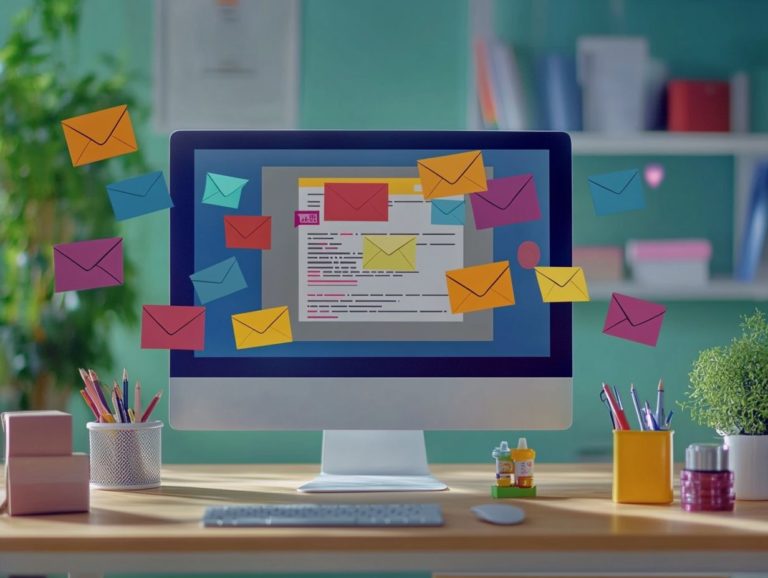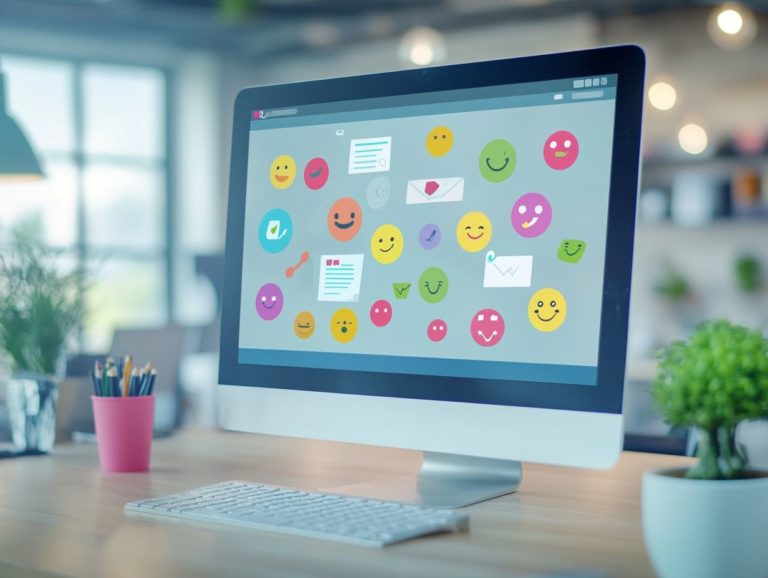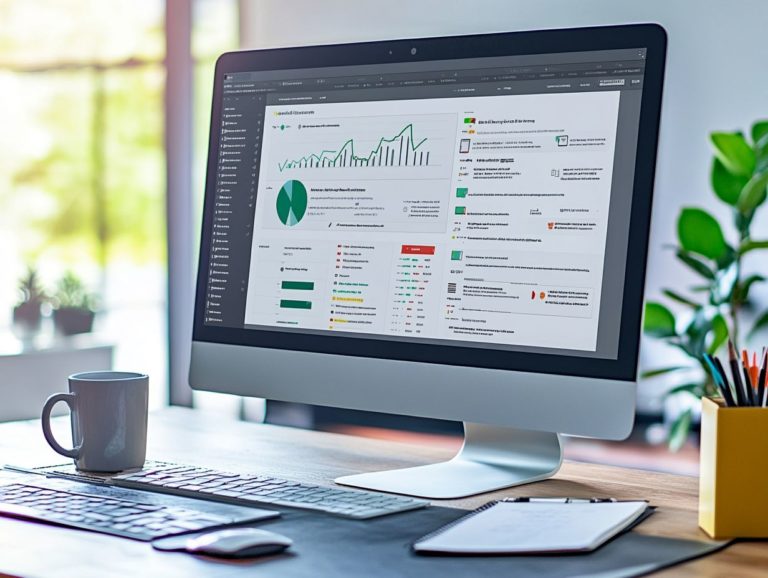Creating Engaging Re-Engagement Emails
Let's Set Up Your Lead Generation Strategy
Fill out the form below, and our team will get in touch with you to create a tailored solution for your business.
In today s fast-paced digital landscape, keeping your audience engaged with email marketing can be challenging. Re-engagement emails offer a powerful opportunity to reconnect with inactive subscribers who have drifted away from your brand.
This article delves into crafting effective re-engagement emails. You will discover their benefits and essential elements, such as compelling subject lines, personalization, and strong calls to action that enhance customer engagement.
You will also explore best practices and metrics for measuring success. This ensures your emails not only land in inboxes but also inspire decisive action. Get ready to breathe new life into your email marketing strategy!
Contents
- Key Takeaways:
- Benefits of Re-Engagement Emails
- Let's Set Up Your Lead Generation Strategy
- Key Components of an Effective Re-Engagement Email
- Let's Set Up Your Lead Generation Strategy
- Best Practices for Creating Re-Engagement Emails
- Let's Set Up Your Lead Generation Strategy
- Measuring Success of Re-Engagement Emails
- Frequently Asked Questions
- Let's Set Up Your Lead Generation Strategy
Key Takeaways:
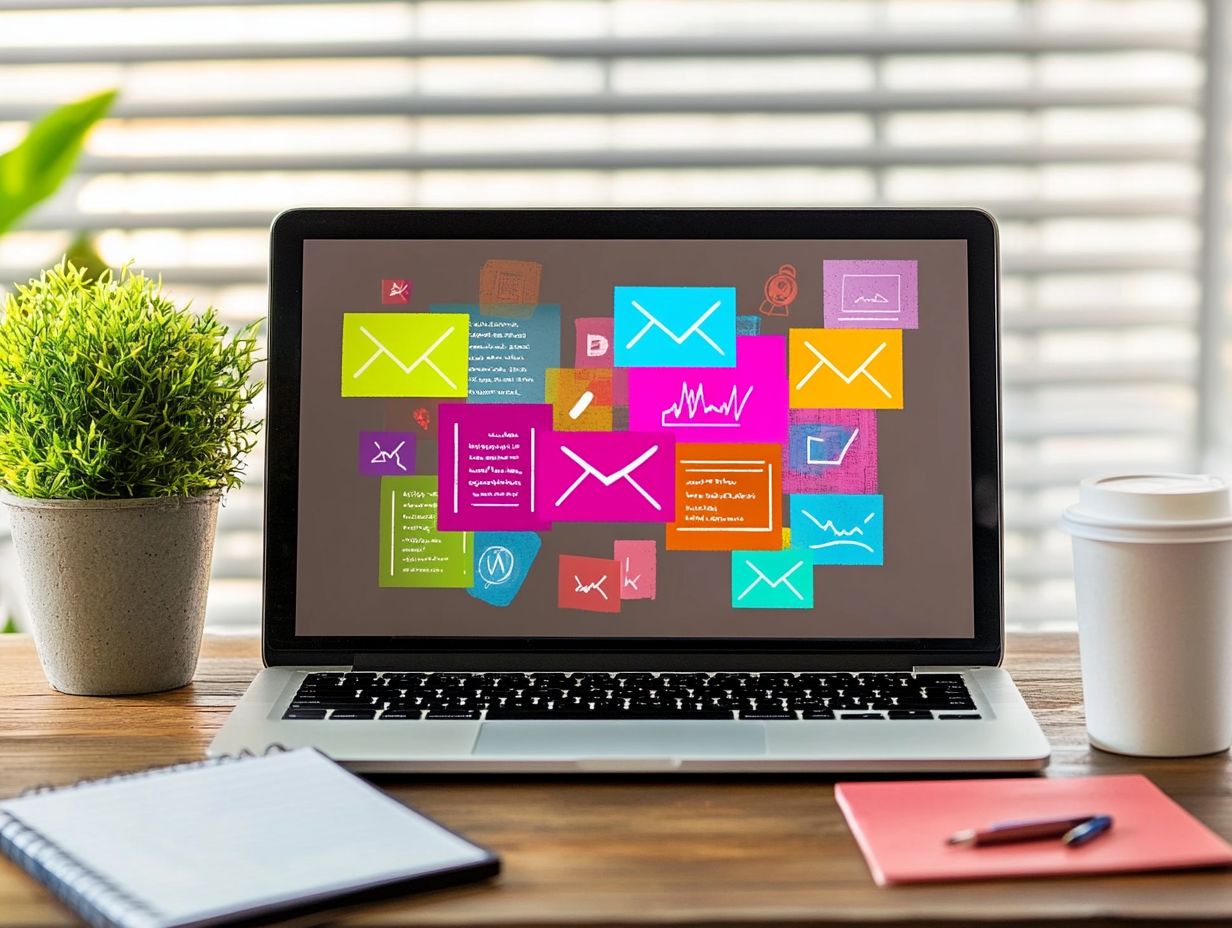
- Re-engagement emails can help revitalize relationships with inactive subscribers and boost email marketing ROI.
- Personalized subject lines, targeted segmentation, and clear calls to action are key components of effective re-engagement emails.
- Tracking metrics and adjusting based on data can help improve the success of re-engagement email campaigns.
What are Re-Engagement Emails?
Re-engagement emails are your secret weapon, expertly designed to rekindle interest with inactive subscribers on your email list. These communications aim to win back lapsed customers, featuring captivating subject lines and personalized content that speaks directly to their unique needs.
By leveraging what customers prefer and tailored engagement strategies, you can boost open rates and click-through rates. This approach enhances customer loyalty and retention.
For example, offering exclusive discounts or incentives can entice recipients back. Another effective strategy is sending surveys to gather feedback. This opens a dialogue that showcases your commitment to improvement while reminding customers that they are valued.
By analyzing metrics like open and click-through rates, you can fine-tune your approach, aligning it with what resonates most with your audience. Implementing automated follow-ups ensures that your re-engagement efforts are timely and consistent, ideally creating a cycle of renewed interest that keeps your brand top-of-mind.
Benefits of Re-Engagement Emails
The advantages of re-engagement emails go far beyond simply reaching out to inactive subscribers; they play a crucial role in a holistic email marketing strategy aimed at enhancing retention and amplifying brand loyalty.
By implementing engagement strategies that resonate with your audience, you can cultivate stronger connections, improve email deliverability, and boost conversions through targeted campaigns.
The thoughtful planning behind these emails leads to improved metrics like open rates and click-through rates, contributing to a higher customer lifetime value.
Why Use Re-Engagement Emails?
Re-engagement emails are your secret weapon for reconnecting with inactive subscribers who may have drifted away from your list. They provide a direct opportunity to win them back and enhance your overall engagement rates.
By understanding the motivations and behaviors of these subscribers, you can craft personalized win-back emails that resonate, boosting both open rates and click-through rates. This strategic outreach rekindles interest and reinforces your brand s commitment to customer satisfaction and loyalty.
Consider using a targeted promotion or an exclusive offer to entice former customers back, clearly showcasing your value and relevance. Insightful analytics reveal patterns in subscriber behavior, enabling you to tailor your re-engagement strategies effectively.
Many brands have found success by employing storytelling in their win-back emails, sharing customer success stories or highlighting new product features that address previous feedback. Such approaches remind subscribers of what they ve missed and demonstrate that their needs are being heard, fostering a deeper connection with your brand.
Let's Set Up Your Lead Generation Strategy
Fill out the form below, and our team will get in touch with you to create a tailored solution for your business.
Start crafting your re-engagement emails today!
Key Components of an Effective Re-Engagement Email
Crafting an effective re-engagement email requires a careful mix of essential components that resonate with your target audience. This includes creating compelling subject lines, developing engaging email content, and incorporating clear calls to action.
Personalization is crucial to ensure these emails remain relevant to inactive subscribers. Using segmentation strategies ensures that the right messages reach the right individuals.
By focusing on these elements, you can significantly enhance the effectiveness of your re-engagement campaigns. This will ultimately drive higher engagement rates and foster improved customer feedback.
Subject Lines

Subject lines are crucial in your email marketing strategy, playing a significant role in determining your open rates and overall email performance. Create exciting subject lines that grab attention instantly to achieve impressive engagement rates, making them essential for re-engagement campaigns.
Test different subject line approaches to see what resonates with your audience. This encourages more recipients to open and interact with your email content.
To optimize effectiveness, integrate keywords that catch attention and align with your audience’s interests. Ensure the subject line accurately reflects the email content; misleading subject lines can lead to higher unsubscribe rates, which no one wants.
Embrace A/B testing strategies for valuable insights into which phrases or styles yield better performance. For example, phrases like “Don’t Miss Out on Your Exclusive Offer” and “We Miss You! Come Back to Claim Your Discount” have proven successful in re-engagement scenarios, enticing recipients to revisit and engage with your brand.
Personalization and Segmentation
Personalization and segmentation empower you to tailor your email content to the unique needs and preferences of your audience, significantly boosting engagement rates. By dividing your email list based on user behavior, purchase history, or preferences, you can craft personalized messages that resonate with individual subscribers. This fosters a deeper connection and encourages re-engagement.
Implement effective segmentation strategies like demographics, geographic location, and engagement level to deliver timely and relevant content. For instance, categorize your audience into groups such as high-value customers, first-time buyers, or those who have shown interest but haven t yet made a purchase.
Collect customer data through surveys, website analytics, and social media interactions to gain valuable insights into your audience’s preferences. This enables you to create more tailored experiences. These methods enhance customer satisfaction and cultivate loyalty, as subscribers feel understood and valued, leading to increased retention rates.
Try these strategies today to see an increase in your engagement rates!
In conclusion, focusing on engaging subject lines, personalized content, and effective segmentation will enhance your re-engagement email strategy. Implement these strategies to foster stronger connections with your audience and drive better results.
Call to Action
A well-crafted call to action (CTA) is essential for guiding you toward the desired outcome, whether that s clicking a link or making a purchase. This ultimately boosts your engagement rates.
Let's Set Up Your Lead Generation Strategy
Fill out the form below, and our team will get in touch with you to create a tailored solution for your business.
In re-engagement emails, CTAs can be customized to include enticing incentives like discount offers or exclusive access. This makes them far more appealing to inactive subscribers.
Placement is crucial positioning CTAs above the fold grabs attention right away. Clear messages grab attention, while embedding them within engaging content enhances interaction even further.
For instance, a brand might present you with a personalized discount to re-engage former customers. This tactic can significantly increase click-through rates and renew interest in their offerings. Such thoughtful incentives not only revive customer relationships but also reinforce ongoing engagement.
Best Practices for Creating Re-Engagement Emails
Implementing best practices for crafting re-engagement emails can greatly enhance their effectiveness. This ensures they reach the right audience at precisely the right moment.
Key factors to consider include the timing and frequency of your email sends, alongside the quality of the content and design.
Incorporating customer feedback into your email strategy improves resonance with inactive subscribers, ultimately driving better results and elevating your overall email outreach efforts.
Timing and Frequency
Timing and frequency are essential to the success of your re-engagement emails. Sending them at just the right moment can significantly boost your engagement rates.
By understanding your customers’ preferences for how often and when they like to receive messages, you can pinpoint the optimal times to reach out to inactive subscribers. This ensures that your communications don t slip through the cracks.
Utilizing automated emails allows you to effectively schedule your re-engagement campaigns, maximizing the chances of reigniting their interest.
Diving into engagement data reveals valuable insights about when specific segments are most responsive to emails. Different demographics may have varying preferences. While some may crave frequent updates, others might feel inundated by too many messages. Striking the right balance is crucial. Overwhelming subscribers can lead to fatigue and increased unsubscribes.
By meticulously analyzing patterns in open and click rates, you can tailor your outreach to match the unique behaviors of each segment. This ultimately crafts a more personalized experience that fosters loyalty and encourages interaction.
Content and Design
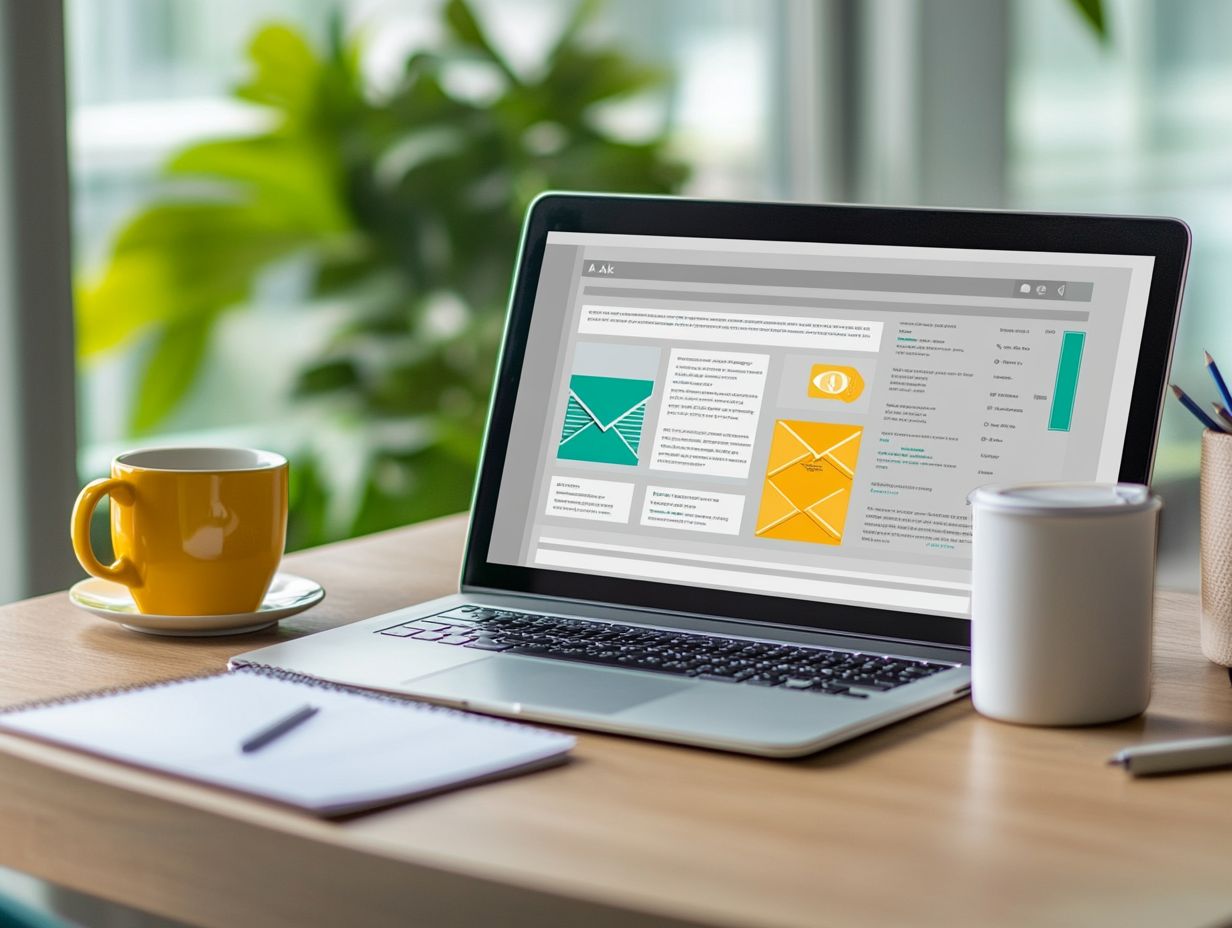
The content and design of your re-engagement emails play a pivotal role in capturing the attention of inactive subscribers. When your email content is well-optimized visually appealing, informative, and tailored to the subscriber’s interests you can significantly boost engagement rates and facilitate a smoother journey back to active status.
Thoughtful design elements, like clear headings and engaging visuals, complement impactful content and enhance the overall user experience.
Don t forget, most users check emails on their phones make sure your design is mobile-friendly! Prioritizing mobile responsiveness is essential since a large percentage of users access their emails on mobile devices. By ensuring your layout adapts seamlessly to different screen sizes, you maintain clarity and readability, leading to higher open and click-through rates.
Let's Set Up Your Lead Generation Strategy
Fill out the form below, and our team will get in touch with you to create a tailored solution for your business.
Using concise language and clear calls to action effectively guides your subscribers toward the desired behavior. By adhering to these best practices, you can recapture your audience’s attention and cultivate a stronger connection that encourages ongoing interaction and loyalty.
Measuring Success of Re-Engagement Emails
Measuring the success of your re-engagement emails is essential for grasping their effectiveness and pinpointing adjustments needed to elevate future campaigns. Key metrics like open rates, click-through rates, and overall email performance yield invaluable insights into how well these messages resonate with inactive subscribers.
By diving into metrics analysis, you can uncover trends and identify areas ripe for improvement, giving you the power to refine your strategies and significantly enhance engagement rates overall.
Metrics to Track
When measuring the success of your re-engagement emails, keep an eye on several key metrics, such as open rate and click-through rate. These serve as direct indicators of your email performance and provide valuable insights into how effectively your subject lines and content resonate with your recipients.
Continuously analyzing these figures helps you understand how well your re-engagement strategies are working and refine your approach as needed.
To interpret these metrics effectively, consider the context. A low open rate might suggest that your subject lines are missing the mark, while a high click-through rate could mean that your content is compelling once it’s opened. For instance, if you consistently notice low open rates, A/B testing comparing two versions of an email to see which performs better can help pinpoint what captures your audience’s attention.
Examining the click-through rate may reveal whether changes in content layout or call-to-action buttons are warranted. By honing in on these metrics, you ll uncover actionable insights that not only enhance your email performance but also strengthen your connections with the audience, ultimately driving conversions.
Adjustments and Improvements
You must adjust and improve based on performance measures and customer feedback to succeed. By diving into the data you collect, you can pinpoint which aspects of your email campaigns need a little polish be it the content, design, or even the timing of your messages.
To kick off this process, start by evaluating key performance indicators like open rates, click-through rates, and conversion rates. If your open rates are lagging, consider revising your subject lines to make them more enticing or experimenting with different send times to see when your audience is most likely to engage.
Customer feedback can shed light on preferences regarding content, prompting you to adjust your message tone or incorporate more personalization.
Integrating dynamic content based on user behavior can significantly enhance relevance, paving the way for more impactful future email campaigns.
Frequently Asked Questions
What are re-engagement emails?
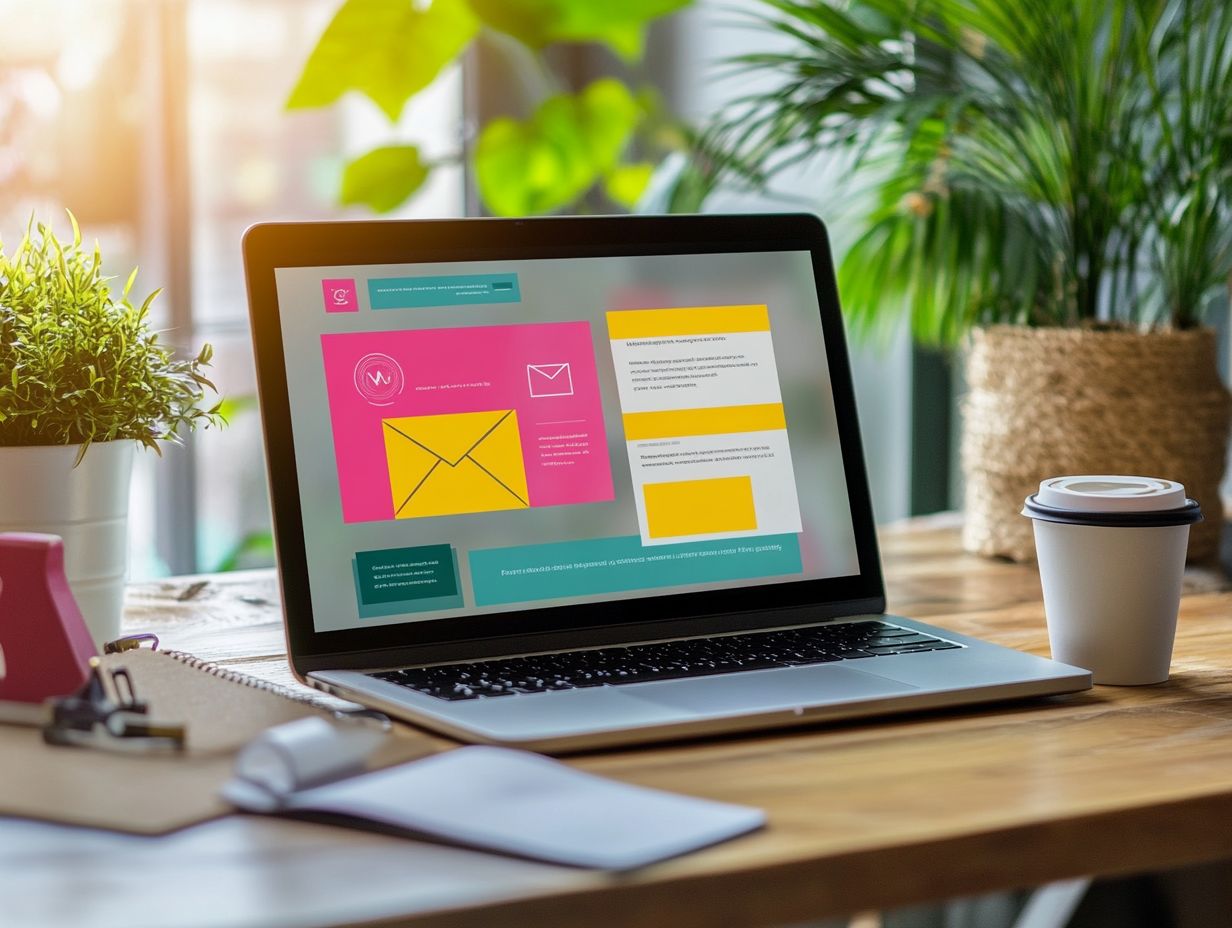
Re-engagement emails are messages sent to inactive or unengaged subscribers in an email list, aiming to spark their interest and encourage them to engage with the sender’s content or product once again.
Why is creating engaging re-engagement emails important?
Creating engaging re-engagement emails is crucial because it helps businesses reconnect with their inactive subscribers, increase email open and click-through rates, and ultimately improve their overall email marketing campaign performance.
What are some key elements to consider when creating engaging re-engagement emails?
- Personalization
- A clear and compelling subject line
- A strong call-to-action
- Relevant and valuable content tailored to the recipient’s interests and behaviors
How can personalization improve the effectiveness of re-engagement emails?
Personalization can make re-engagement emails more effective by making the recipient feel valued and understood. This can be achieved by using their name, referencing their past interactions with the business, and offering personalized content or deals based on their interests.
Let's Set Up Your Lead Generation Strategy
Fill out the form below, and our team will get in touch with you to create a tailored solution for your business.
Don’t wait start refining your strategy today to reconnect with your audience!
What are some common mistakes to avoid when creating re-engagement emails?
Some common mistakes to avoid when creating re-engagement emails include using a generic or unappealing subject line and sending too many emails too frequently. Also, not addressing the recipient’s specific concerns or interests is a significant mistake. Avoid sounding too salesy or pushy in these emails.
How can A/B testing help in creating engaging re-engagement emails?
A/B testing boosts the effectiveness of re-engagement emails. This means comparing two versions of an email to find out which one works better. It allows you to see what works best, ensuring your emails grab attention and drive action. Don t miss out use A/B testing to supercharge your email strategy today!


